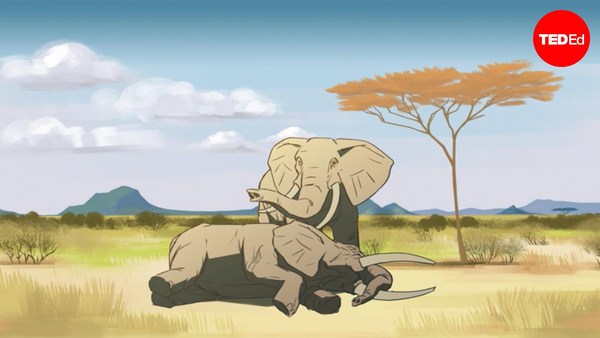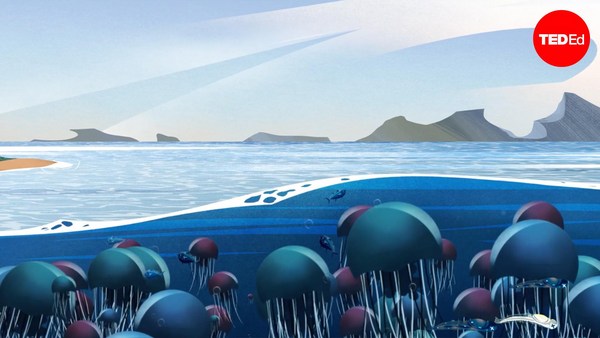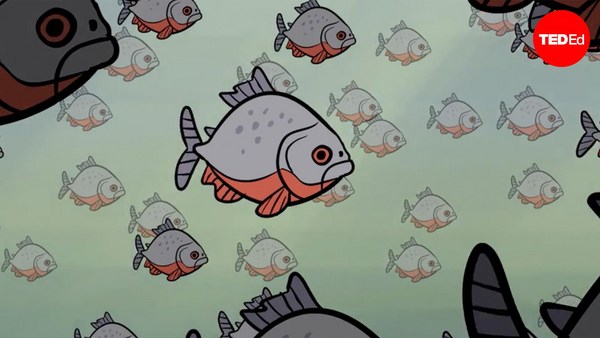These humpback whales have already covered thousands of kilometers on their migration from tropical breeding grounds to colder feeding grounds. But one of these whales is about to take a detour. From several kilometers away, it hears a group of orcas harassing a seal, and— as if answering a distress signal— it races off. The humpback charges the 8-meter-long orcas, driving them away with its massive pectoral flukes. Then, when the threat is gone, it swiftly returns to its journey.
Humpbacks are known to mount these kinds of impromptu rescue missions. But why would they expend time and energy risking their lives for a stray seal? Isn’t nature a cruel and vicious place, without room for generosity? Well, sort of.
The publication of Charles Darwin’s “On the Origin of Species” introduced the notion of survival of the fittest, creating a lasting vision of Earth’s strongest animals dominating the natural world. But this isn’t what Darwin meant by fitness, nor is it how modern biologists define it. Rather than describing an animal’s physical strength, fitness refers to how likely an organism is to pass on its genes to the next generation. This means the fittest animals are those who can survive long enough to produce healthy offspring. And while that might occasionally describe a powerful predator, the fittest animal can also be the most stealthy, resourceful, or even the most cooperative. So what exactly does cooperation look like in the animal kingdom?
Sometimes it's fairly straightforward. In the sun-dappled waters of the Great Barrier Reef, cleaner wrasse diligently inspect other fish for parasites, eating up any blood suckers with a precise nibble. This kind of arrangement, in which both sides benefit, is known as mutualism. But this particular relationship can also be parasitic. If a wrasse thinks it can get away with it, it will try to take a bite of the fish it’s cleaning. This parasitic turn is only temporary, of course, and the wrasse will quickly return to its usual gourmet grooming.
Meanwhile, in the Kalahari Desert, meerkat mobs dig for buried prey. This technique leaves the foragers vulnerable, but when an eagle swoops down for a snack, the mob’s appointed sentry cries out. With lightning speed, the meerkats retreat to the safety of their burrows, leaving the bird in their dust. While this arrangement is essential for the foragers, the sentries can't eat while on duty, and sounding a warning puts them directly in the eagles’ line of fire. But despite this roll’s dangers, it might actually increase their fitness. Many evolutionary biologists believe animals improve their odds of passing their genes to the next generation in one of two ways. Either directly by having their own offspring, or indirectly by helping genetic relatives have offspring. Meerkat sentries may gain this indirect fitness benefit since groups tend to be comprised of closely related individuals.
Of course, animals don't have to be family to protect each other. For Costa Rican vampire bats, just a few unsuccessful hunts can mean starvation. So it's fortunate that when a bat is dying of hunger, another bat might regurgitate some of its own meal to help its roost mate through this lean period. This is a considerable cost for the gifting bat. But this practice develops a “you scratch my back and I’ll scratch yours” arrangement, more formally known as reciprocal altruism. This isn’t altruism in its purest sense because when the donor gives away its hard-won food, it does so expecting to receive similar help in the future. But while it’s true that we usually see animals help one another in exchange for food, fitness, or favors, that doesn’t mean the animal kingdom is devoid of truly selfless altruism.
Researchers still don't know why humpbacks protect unrelated whales and the occasional seal from powerful predators. And while it might seem hard to believe this heroic feat is an act of generosity, who knows what kinds of kindness we may discover as we continue investigating Earth’s countless cooperative creatures.


